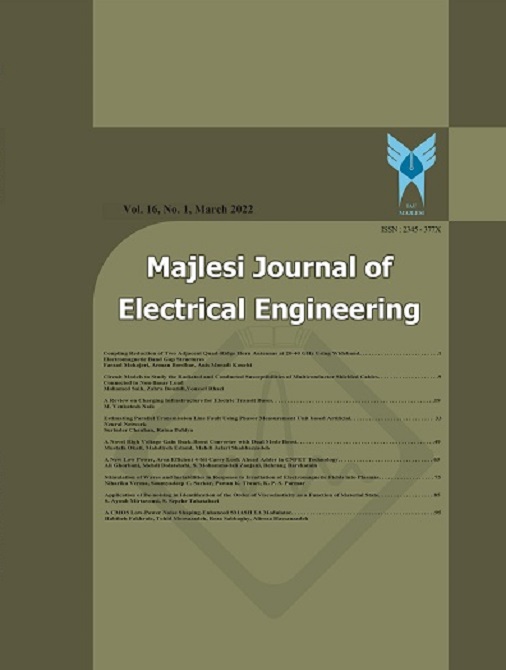[1] S. Alamouti, “A simple transmit diversity technique for wireless communications,” IEEE J. Sel. Areas Commun., Vol. 16, No. 8, pp. 1451–1458, Aug. 1998.
[2] V. Tarokh, H. Jafarkhani, and A. R. Calderbank, “Space-time block codes from orthogonal designs,” IEEE Trans. Inf. Theory, Vol. 45, No. 5, pp. 1456–1467, Jul. 1999.
[3] J.-C. Belfiore, G. Rekaya, and E. Viterbo, “The Golden code: a 2×2full-rate space-time code with non-vanishing determinants,” IEEE Trans. Inf. Theory, Vol. 51, No. 4, pp. 1432–1436, Apr. 2005.
[4] H. Jafarkhani, “A quasi-orthogonal space-time block code,” IEEE Trans. Commun., Vol. 49, No. 1, Jan. 2001.
[5] D. Agrawal, V. Tarokh, A. Naguib, and N. Seshadri, “Space-time coded OFDM for high data-rate wireless communication over wideband channels,” in Proc. IEEE VTC ’98,Vol. 3, pp. 2232-2236, May 1998.
[6] W. Zhang, X.-G. Xia, and P. C. Ching, “High-rate full-diversity space time-frequency codes for broadband MIMO block-fading channels,” IEEE Trans. Commun., Vol. 55, pp. 25–34, Jan. 2007.
[7] W. Su, Z. Safar, and K. J. R. Liu, “Full-rate full-diversity space-frequency codes with optimum coding advantage,” IEEE Trans. Inform. Theory, Vol. 51, No. 1, pp. 229–249, Jan. 2005.
[8] W. Su, Z. Safar, and K. J. R. Liu, “Towards maximum achievable diversity in space, time and frequency: performance analysis and code design,” IEEE Trans. Wireless Commun., Vol. 4, No. 4, pp. 1847-1857, July 2005.
[9] M R. Bhavani. S. and K. V. S. Hari, “Systematic construction of linear transform based full-Diversity, rate-one space–time frequencycodes,” IEEE Trans. Signal Process., Vol. 57, No. 6, pp. 2285-2298, Jun. 2009.
[10] Z. Liu, Y. Xin, and G. B. Giannakis, “Space-time-frequency coded OFDM over frequency-selective fading channels,” IEEE Trans. Signal Process., Vol. 10, pp. 3465-2476, Oct. 2002.
[11] W. Zhang, X. G. Xia and P. C. Ching, “Full-diversity and fast ML decoding properties of general orthogonal space-time block codes for MIMO-OFDM systems,” IEEE Trans. Wireless Commun., Vol. 6, pp. 1647-1653, May 2007.
[12] W. Su, Z. Safar, M. Olfat, and K. J. R. Liu, “Obtaining full-diversity space-frequency codes from space-time codes via mapping,” IEEE Trans. Signal Process., Vol. 51, pp. 2905-2916, Nov. 2003.
[13] T. Kiran and B. S. Rajan, “A systematic design of high-rate full-diversity space frequency codes for MIMO-OFDM systems,” in Proc. IEEE International Symposium Information Theory, Sep. 2005.
[14] F. Fazel and H. Jafarkhani, “Quasi-orthogonal space-frequency block codes for MIMO OFDM channels,” in Proc. IEEE International Conference on Communications, Jun. 2006.
[15] F. Fazel and H. Jafarkhani, “Quasi-orthogonal space-frequency and space-time-frequency block codes for MIMO OFDM channels,” IEEE Trans. Wireless Commun., Vol. 7, pp. 184-192, Jan 2008.
[16] L. Venturino, N. Prasad, X. Wang, and M. Madihian, “Design of linear dispersion codes for practical MIMO-OFDM systems,” IEEE J. Select. Signal Process.,Vol. 1, No. 1, pp. 178–188, Jun. 2007.
[17] M. Shahabinejad and S. Talebi, “Full-diversity space-time-frequency coding with very low complexity for the ML decoder,” IEEE Commun Letters, Vol. 16, No 5, pp. 658-661, May 2012.

